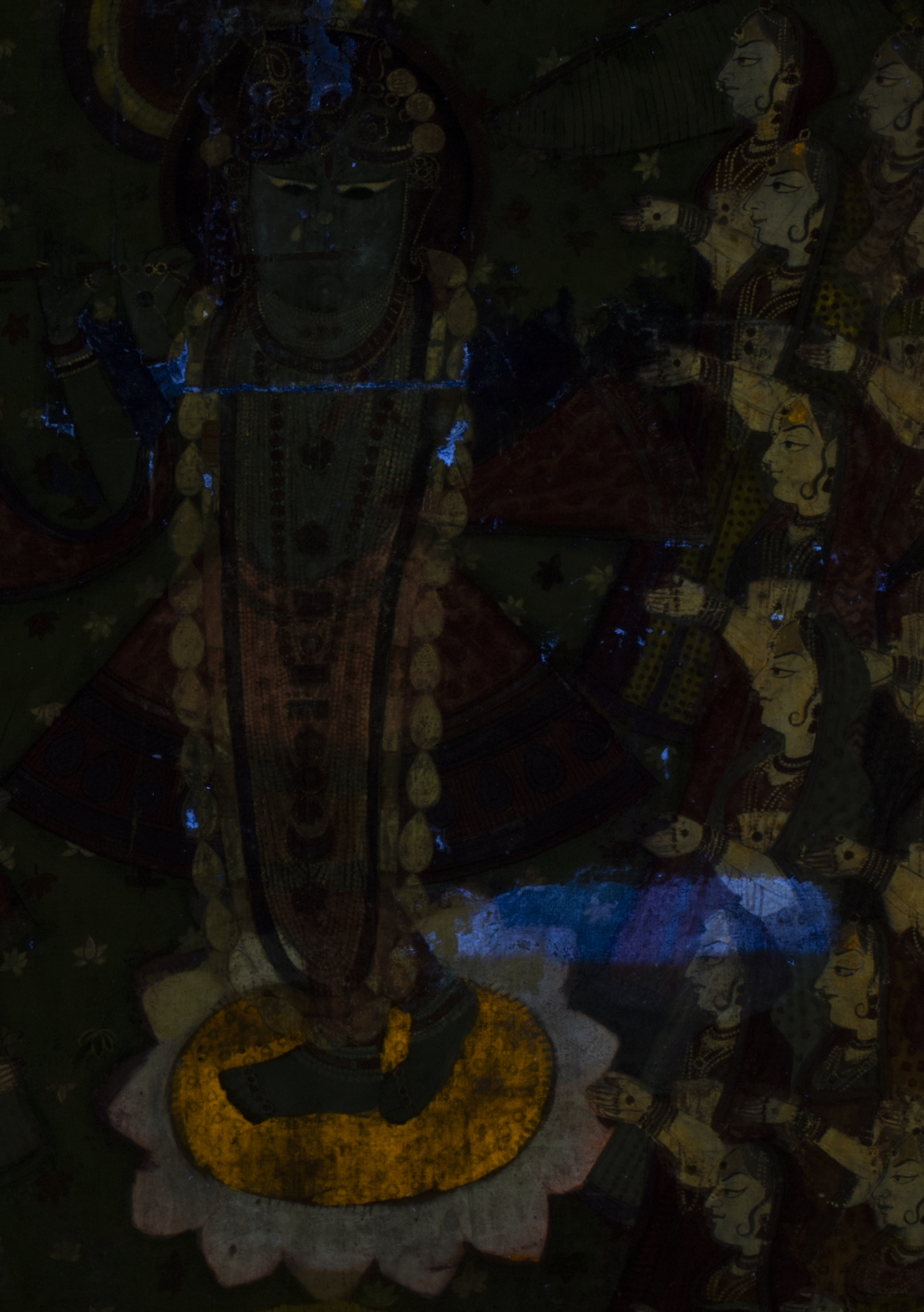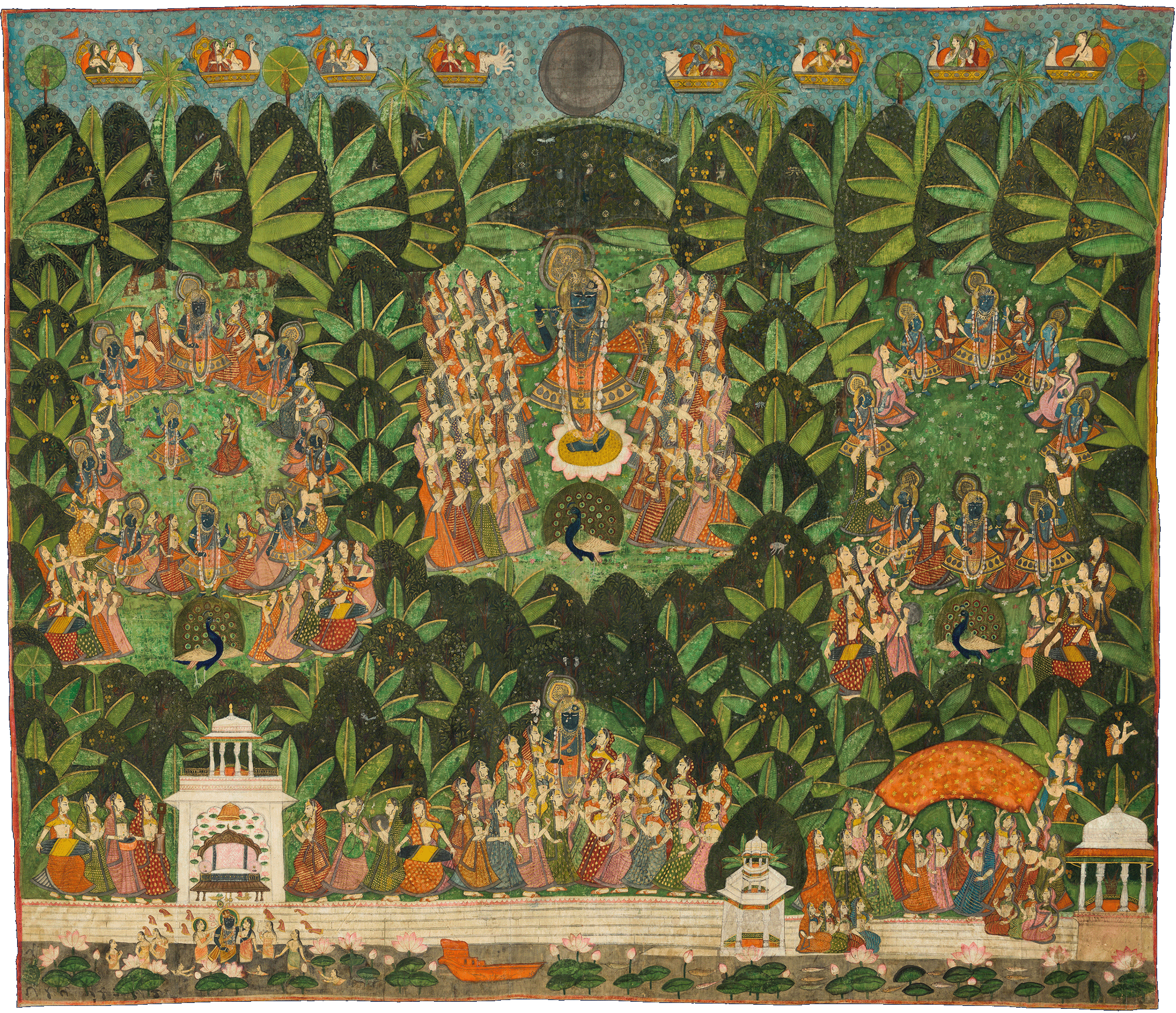Select a highlighted point on the painting to encounter insights from our contributing experts about that part of the painting.
The shapes indicate who the insight came from.
 | Conservation and Scientific Research Team |
|---|---|
 | Hindu Community Members Advisors |
 | Curatorial Team |
More object information
All of Krishna’s actions are considered lila (joyful divine play). The most meaningful and magical lila occurred on the night of the autumn full moon (Sharad Purnima) in Braj. That evening, Krishna multiplied himself for each gopi and joined them in the great circle dance known as the raas lila. This rare composition represents not only the raas lila but also the events that occurred before and after.
Krishna devotees imagine and feel the emotions of raas lila. This experience helps them recognize Krishna in all things and beings. Because of this, raas lila is the subject of many pichwai paintings.
A region in north India near the Yamuna River in the state of Uttar Pradesh. Mount Govardhan and the city of Mathura are located in Braj.
A teardrop-shaped design motif (often called paisley in the West).
A village milkmaid. The gopis, who felt deep affection for Krishna during his lifetime on earth, personify devotion to the god.
A low mountain located outside the north Indian city of Mathura that is associated with the child Krishna, who miraculously lifted it to shelter his devotees from a torrential rain.
The Mughal Empire controlled much of India between 1526 and 1857. Elements of its highly refined court culture were adopted across India.
A large painted or woven cloth that is an integral part of Pushtimarg devotion to Krishna.
The "Path of Grace" is a Hindu devotional tradition founded in the fifteenth century. It centers on the deity Krishna as a seven-year-old child.
A classical Indian musical mode associated with the monsoon season.
The divine circle dance in which Krishna multiplied himself for each gopi.
In the Pushtimarg community, devotees who care for and serve Krishna.
A festival on the night of the full moon (purnima) in the month of Sharad (September–October).
The central deity of the Hindu Pushtimarg tradition is a form of the god Krishna. Shri Nathji’s name refers to his status as the Lord of Mount Govardhan.
The Yamuna River begins in the Himalayas and flows south past New Delhi before merging with the Ganges. Hindus consider the Yamuna sacred.
The evening begins in a verdant grove on the banks of the Yamuna River, when Krishna’s beguiling flute music draws all of the milkmaids (gopis) of Braj out of their homes to join him amongst the banana leaves.
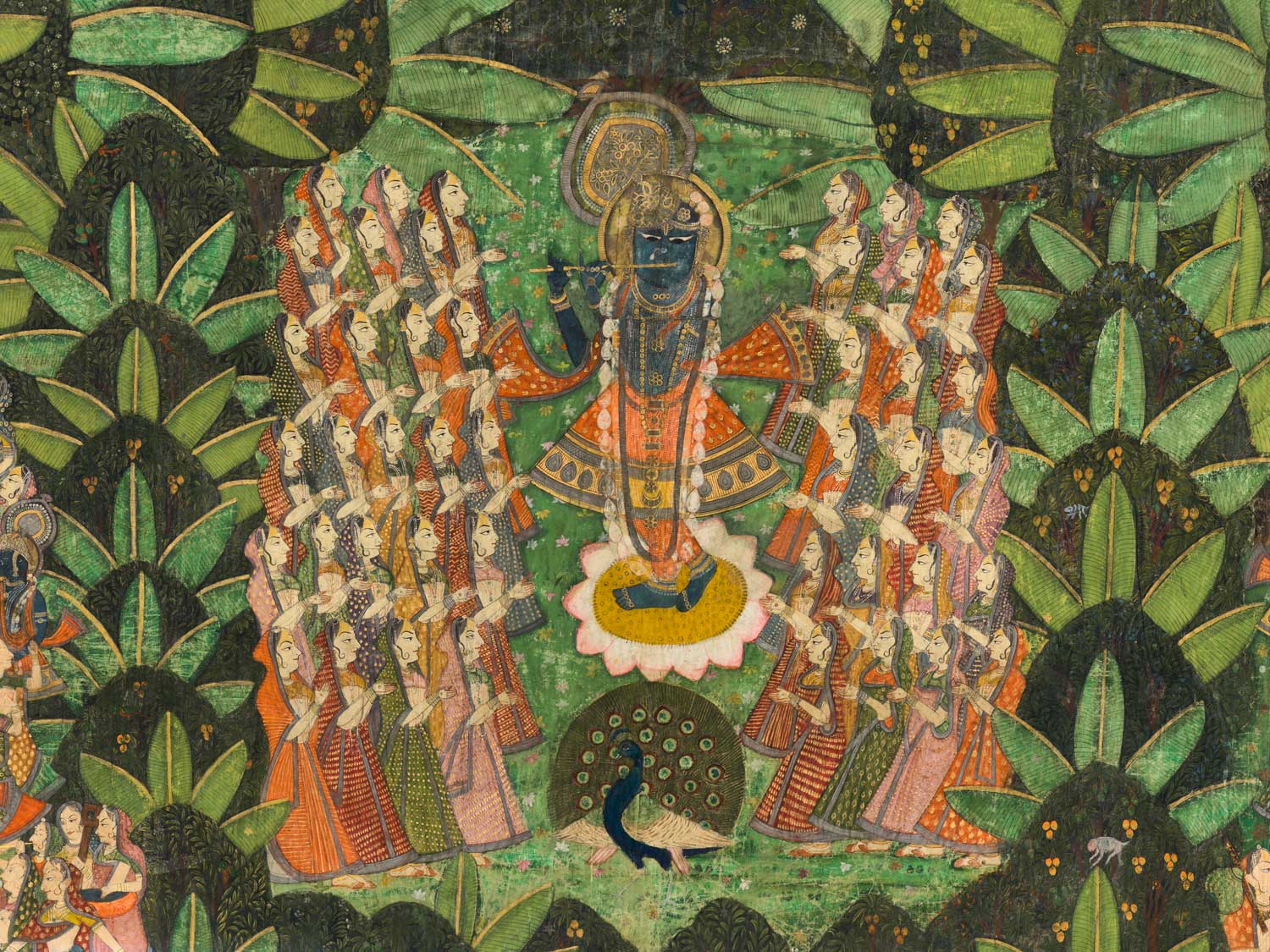
The color used for Krishna is Prussian blue, a pigment first
invented in Germany in the early eighteenth century but soon
manufactured in other regions of the world. Indigo and ultramarine
are two other blue pigments popular in pichwais, and they
appear transparent when we examine them in the near-infrared region
(NIR). Prussian blue is not transparent in the NIR region, so
Krishna remains dark.
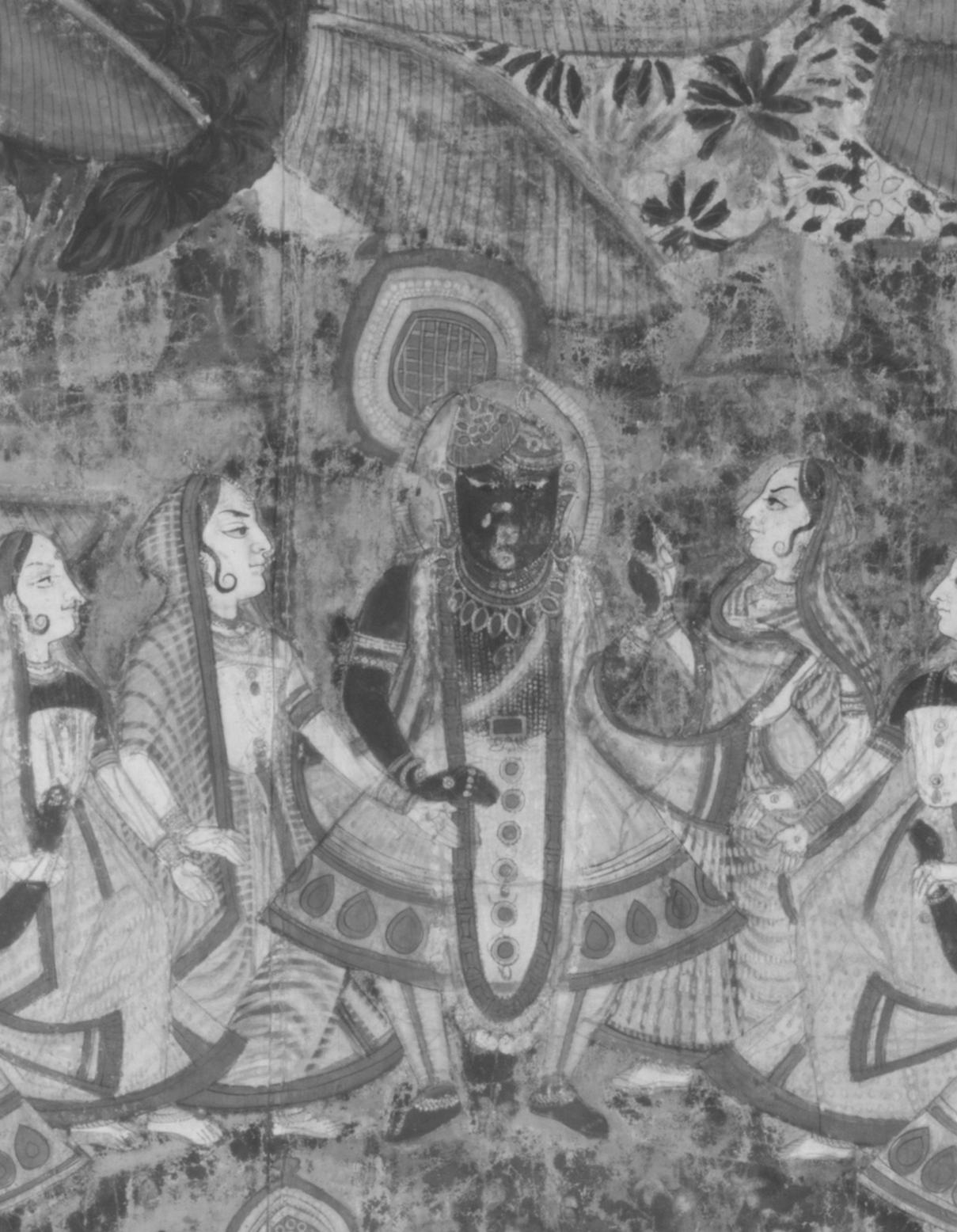
“Look at all the bright green banana leaves! That high contrast with the darker trees does something. The banana leaves are like fingers pointing to Krishna. They point to every place where Krishna is, and he is everywhere!”
–Sushmita Mazumdar, DC-based artist
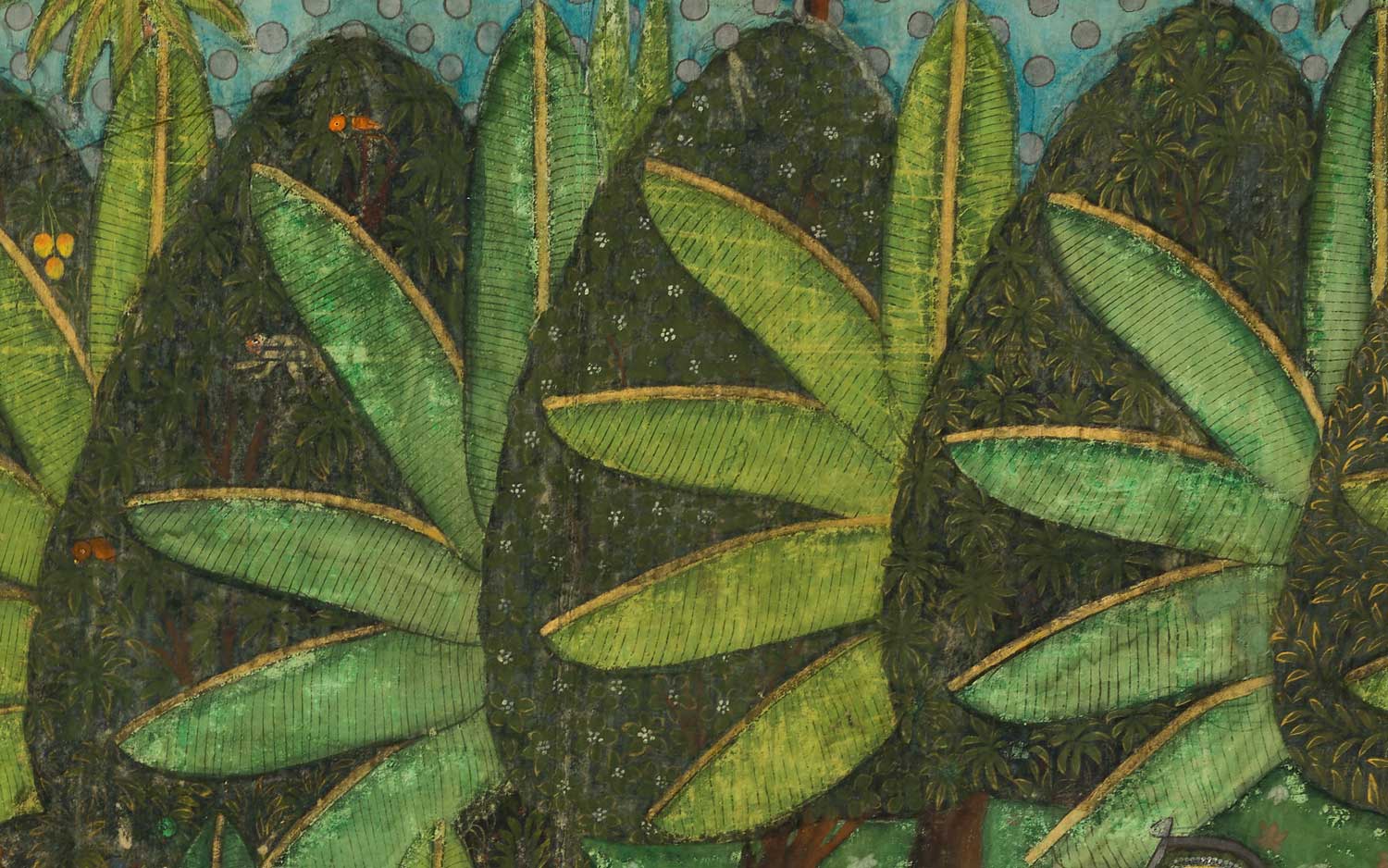
The Indian yellow used to paint leaves on the dark green trees fluoresces bright under UV light, even as the pichwai appears to have darkened some with age. UV images allow us to see the original detail of the leaves. The leaves on the banana trees were also painted with Indian yellow and appear bright in the UV image.
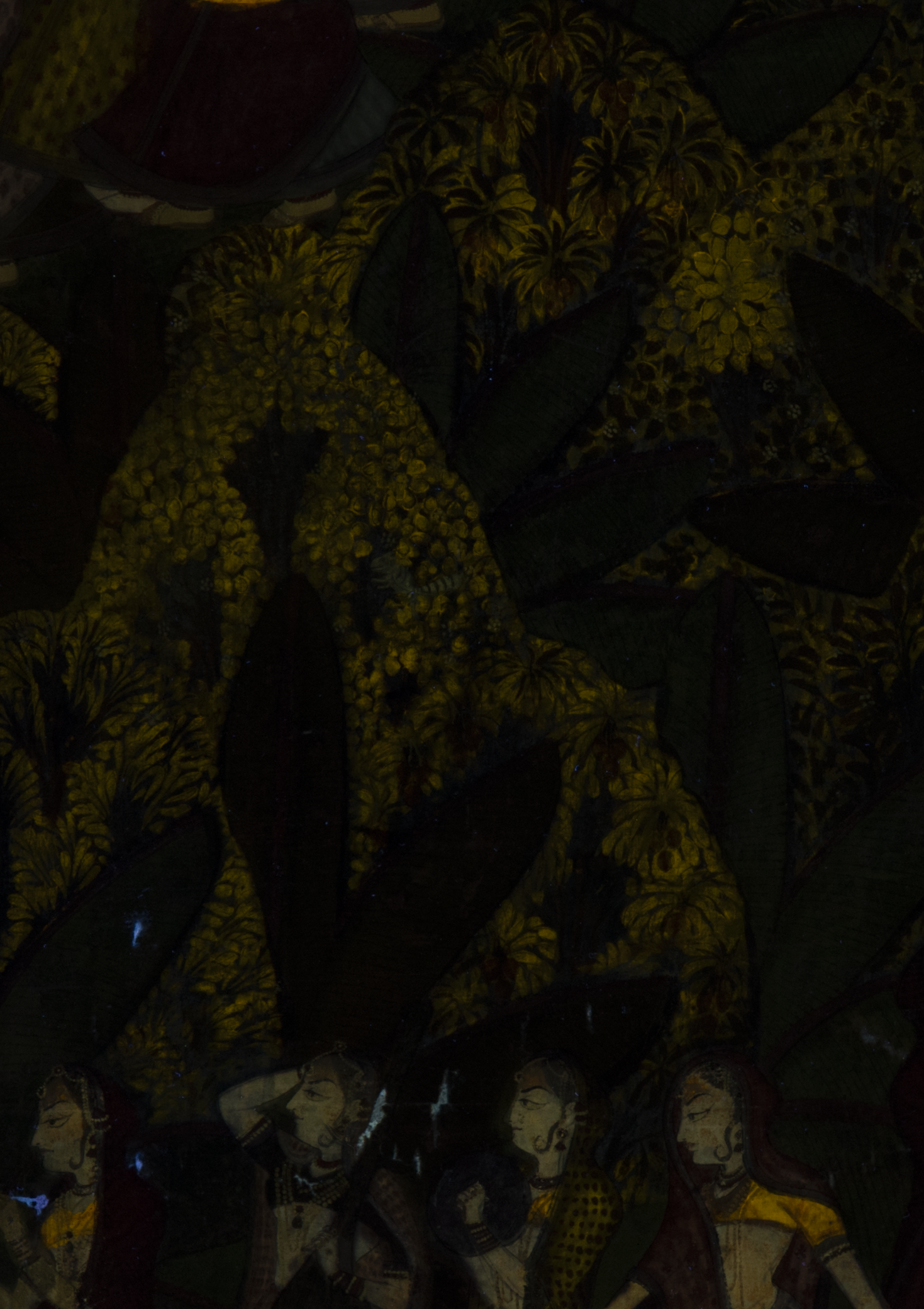
Once gathered, they begin the circle dance (raas lila). Because Krishna multiplies himself, each enraptured gopi believes that she alone dances with god. This event was so extraordinary, the gods gathered above to witness Krishna’s outpouring of love.
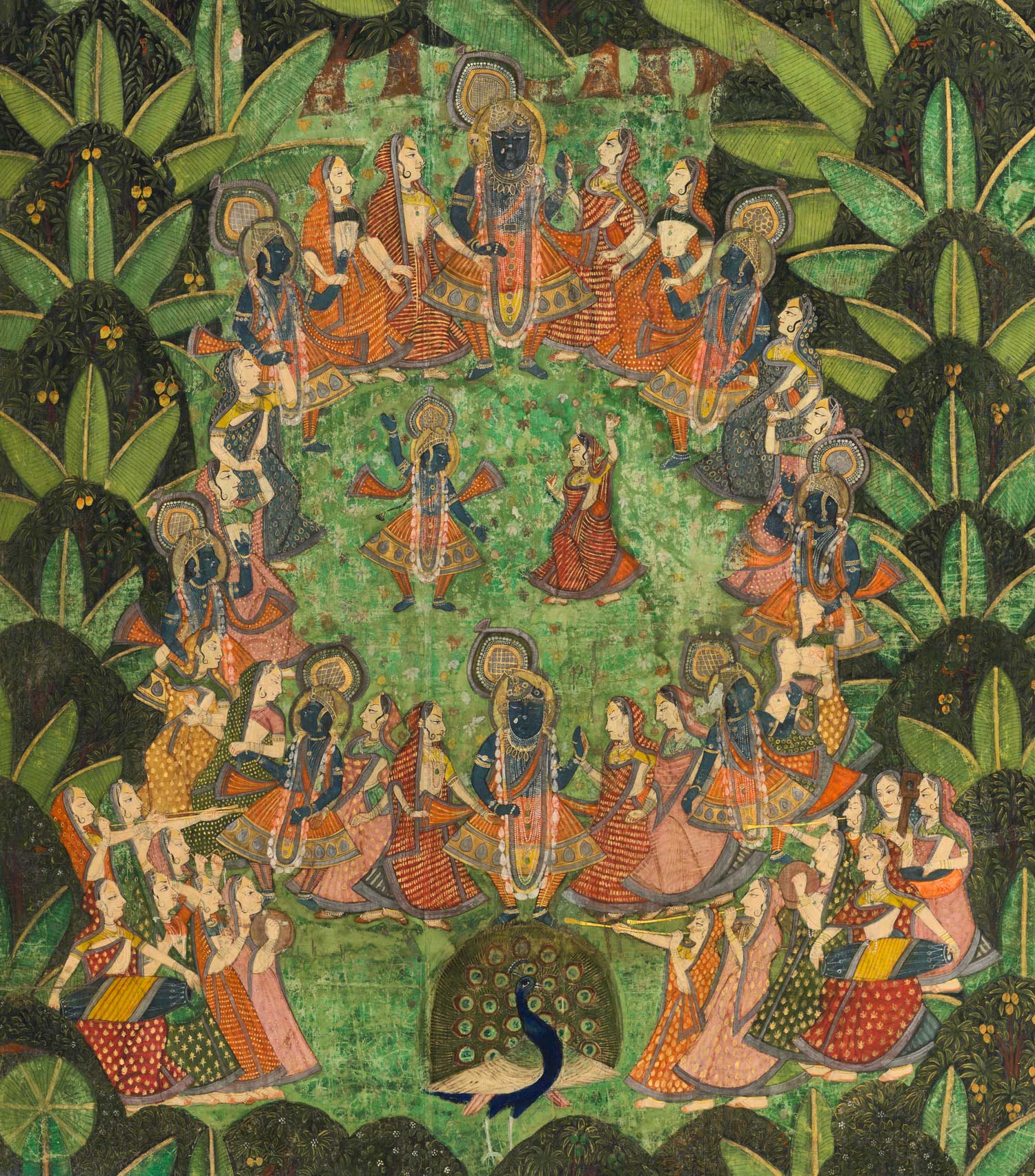
"This painting encapsulates how I see my relationship with Krishna in the sense that it shows how Krishna's love for his devotees has no template or bounds. Each of us can have a unique personal relationship with Krishna, and we can celebrate him together as a community.”
—Shreyans Goenka, professor
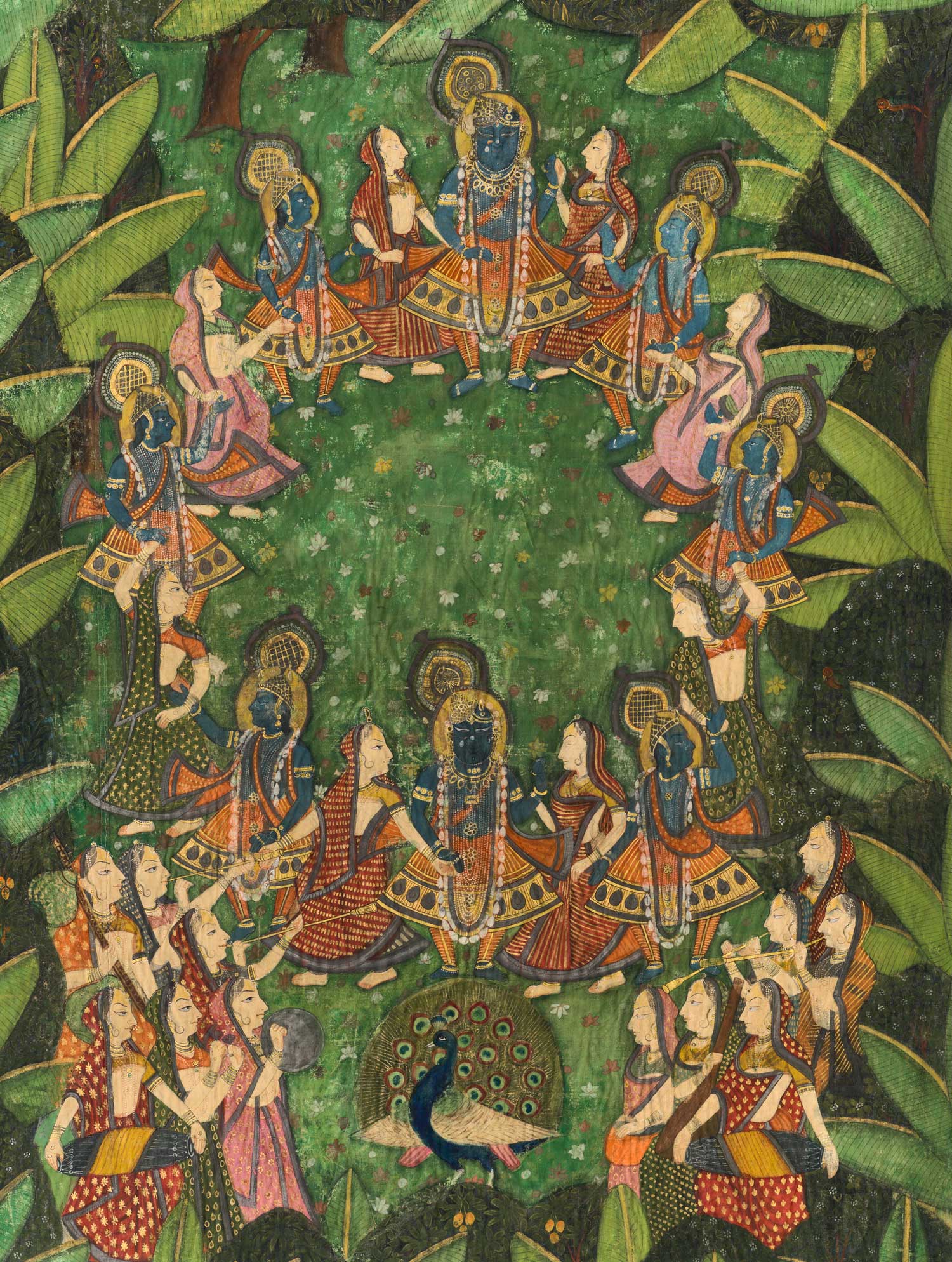
When the gopis’ pride swells because each believes that she has Krishna to herself, he vanishes! The remorseful milkmaids then find comfort in reenacting Krishna’s lifting of Mount Govardhan.
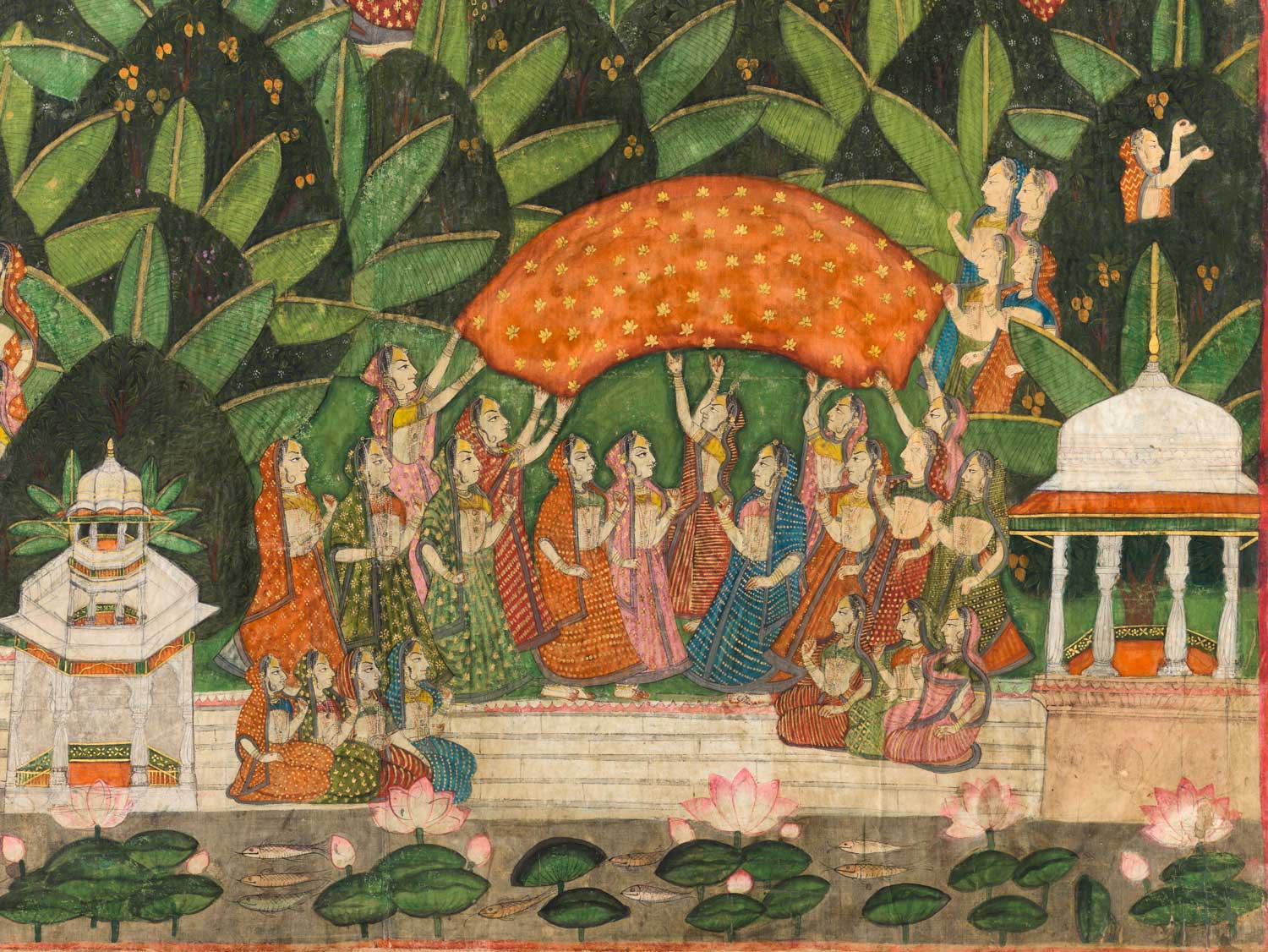
After seeing the gopis reenact his lifting of Mount Govardhan, Krishna responds to their steadfast devotion. He graciously reappears and joins the gopis. They all rejoice and then bathe in the Yamuna River at sunrise.
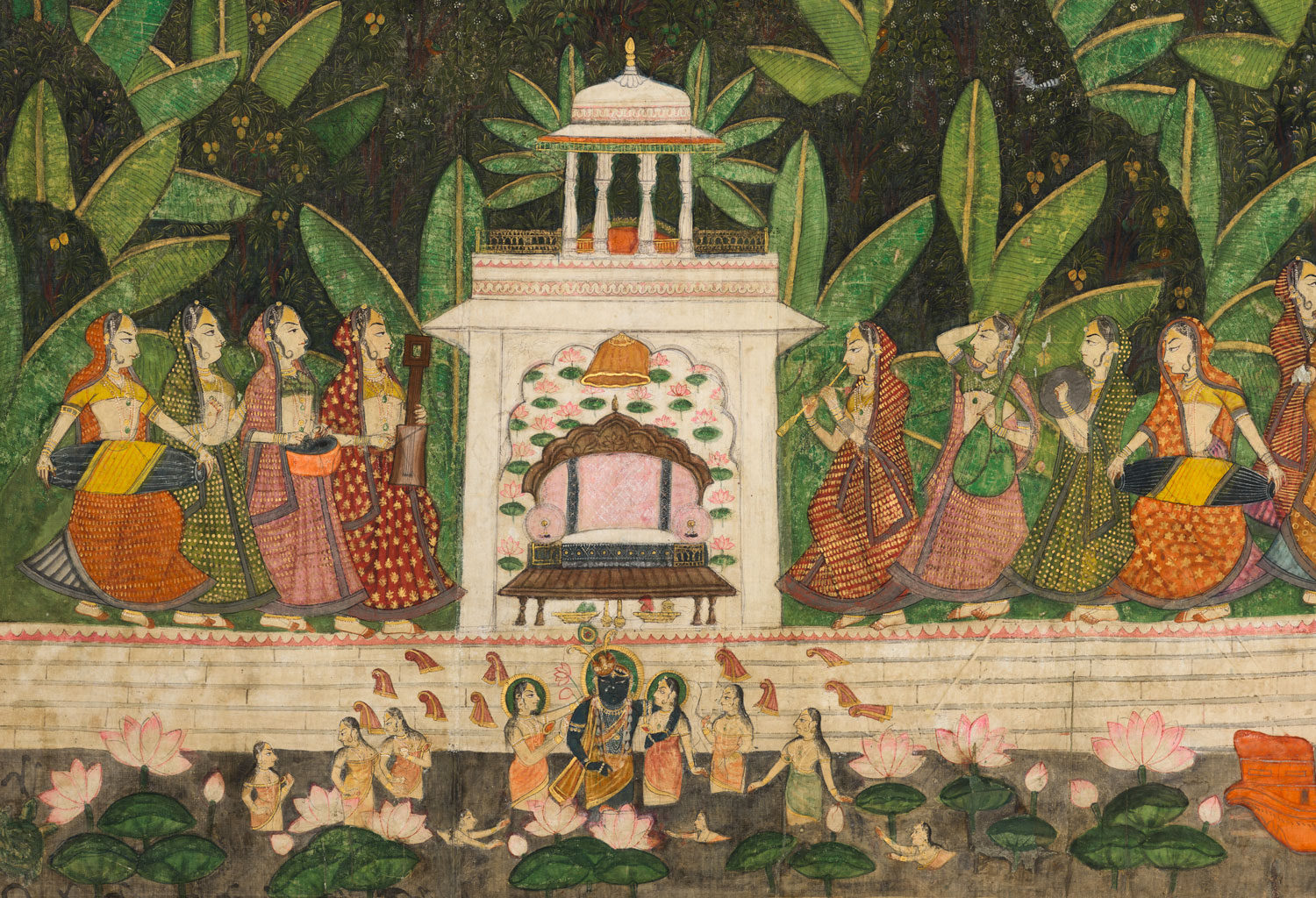
Scientific imaging can be used to identify not only pigments in the pichwai but also areas of previous repair. Areas where the pichwai has been repaired glow white-blue under UV illumination.
